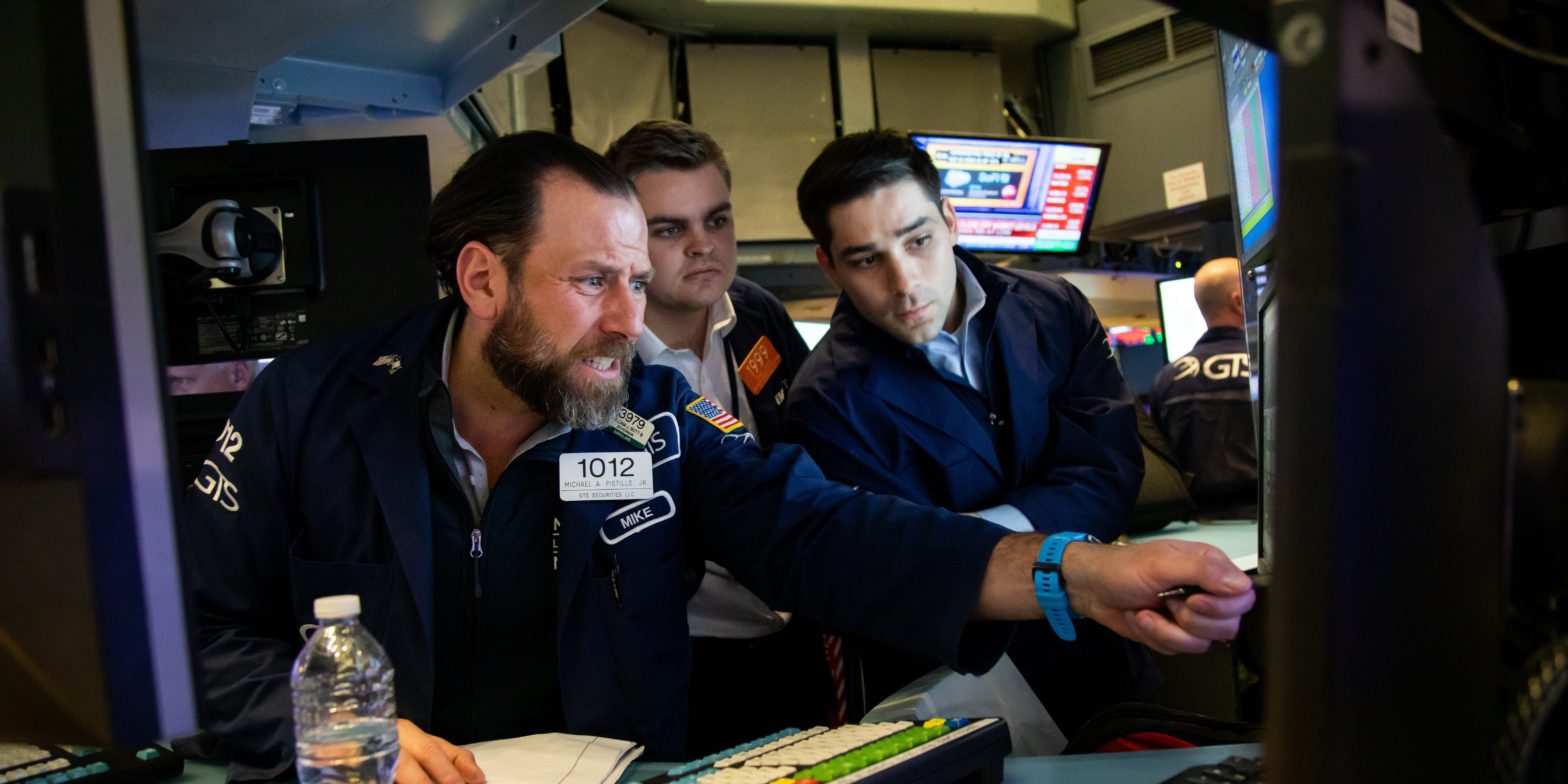BofA says the S&P 500’s summer surge of 17.4% in 41 trading days is a ‘classic’ bear market rally The Fed still has to work to bring down inflation and that could mean another pullback for stocks. The bank found that just four large-cap stocks contributed 30% of the index’s recent gain. Loading Something is loading.
The summer surge in the S&P 500 should be considered an average bear-market rally and the index remains vulnerable to falling under its recent lows, according to Bank of America.
The investment bank in its weekly Flow Show note published Friday looked at 43 bear-market rallies, marked by gains of more than 10%, since 1929.
It found the average of those past bear-market rallies was 17.2% in 39 trading days. The S&P 500 in 41 trading days piled on 17.4% through the close of Thursday’s session. The index on Friday moved at around 4,226.
“Thus far [a] classic bear rally, and ultimately self-defeating rally…you think SPX >4500 and Fed going to stop hiking?,” said BofA, referring to the Federal Reserve’s rate-hike campaign to cool down the hottest inflationary environment in four decades.
The S&P 500’s jump from its June 16 low found fuel from investors interpreting comments by Federal Reserve Chairman Jerome Powell as a “pivot” toward policy makers considering cutting interest rates in the face of a slowing economy and potentially cooler inflation. Headline inflation did ease in July, to 8.5% from June’s 9.1% rate which marked a 41-year high.
The “pivot” trade and the resurgence of meme stocks underscored the market’s waning fear of Fed policy. But investors this week heard Fed officials voice support for a third consecutive rate hike of 75 basis points at the Fed’s September meeting. Fed Chairman Jerome Powell will speak next Friday at the central bank’s symposium in Jackson Hole, Wyoming.
Bank of America said it holds the “cyclical bear” view that stocks have moved near the top of their trading range and that the market has yet to see “ultimate lows” which may come next year.
Among its reasoning, it outpointed that for every $100 of bonds the Fed bought during the COVID crisis – totaling $5 trillion – it has sold just $2. [“With] inflation on course to be 5%-6% next spring, quantitative tightening is likely to be stepped up significantly in coming months, which would be negative for credit spreads & equity multiples,” said Bank of America Securities chief investment strategist Michael Hartnett in the note.
Meanwhile, housing trends are “already menacing,” and that means as the Fed tightens policy further that credit, consumer, and labor markets will likely come under deeper pressure and that’s negative for corporate per-share earnings.
“In short we prefer to be … long stocks at a 4.5% unemployment rate, not a 3.5% unemployment rate.”
The blowout July jobs report showed the unemployment rate fell to 3.5%. A rise in the unemployment rate would stall activity among retail investors, BofA said.
The S&P 500’s summer surge featured a July advance of 9.1%, the largest monthly rise since November 2020. The rally has been narrow, with BofA determining that just four stocks – Apple, Microsoft, Amazon, and Tesla – contributed 30% of the S&P 500’s gain during its latest rally. Large-cap tech stocks have particularly been battered during 2022 as investors positioned themselves for an aggressive rate-hike cycle by the Fed to battle burning inflation.
BofA said it is now “pragmatically bearish” for 2022 rather than dogmatically bearish partially because if services inflation quickly follows goods inflation lower that would be bullish for prospects for the consumer price index declining below 4%. As well, if there is no US economic recession, that is bullish for corporate profits in the current “era of government bailouts,” said the bank.
In 2022, “politicians [are] panicking and subsidizing consumer spending on energy, oil, gasoline everywhere from San Francisco to London to Berlin, no matter what long-term climate consequences.”
